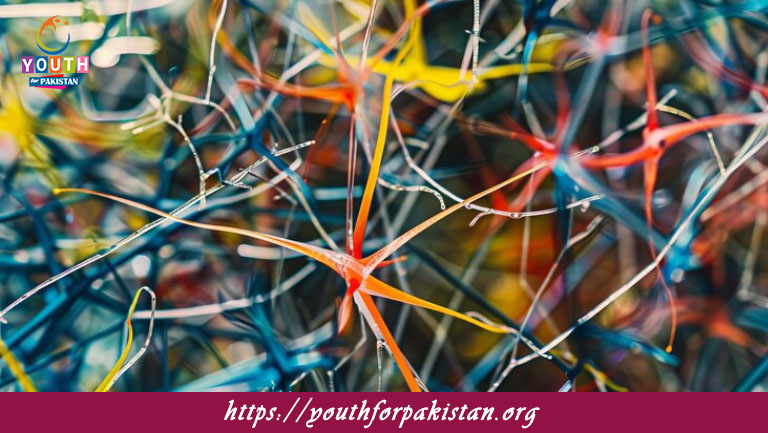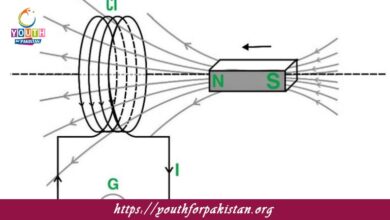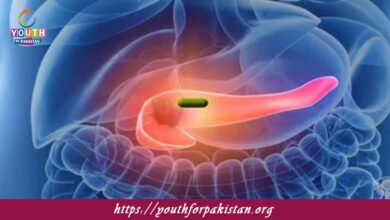Chemical Synapses MDCAT MCQs with Answers

Welcome to the Chemical Synapses MDCAT MCQs with Answers. In this post, we have shared Chemical Synapses Multiple Choice Questions and Answers for PMC MDCAT 2024. Each question in MDCAT Biology offers a chance to enhance your knowledge regarding Chemical Synapses MCQs in this MDCAT Online Test.
The primary characteristic of a chemical synapse is:
a) Direct electrical connection between neurons
b) Transmission of signals through neurotransmitters
c) Use of ions to transmit signals
d) Involvement of gap junctions
In a chemical synapse, neurotransmitters are released from the:
a) Postsynaptic neuron
b) Axon terminal of the presynaptic neuron
c) Dendrite of the postsynaptic neuron
d) Cell body of the presynaptic neuron
The gap between the presynaptic and postsynaptic neurons in a chemical synapse is called the:
a) Synaptic cleft
b) Axon hillock
c) Node of Ranvier
d) Myelin sheath
Which ion is crucial for the release of neurotransmitters into the synaptic cleft?
a) Sodium
b) Potassium
c) Calcium
d) Magnesium
The process by which neurotransmitters are taken back into the presynaptic neuron is known as:
a) Diffusion
b) Reuptake
c) Degradation
d) Exocytosis
The primary role of neurotransmitters in a chemical synapse is to:
a) Bind to ion channels
b) Stimulate muscle contraction
c) Transmit signals across the synaptic cleft
d) Degrade other neurotransmitters
Which neurotransmitter is involved in stimulating muscle contraction at the neuromuscular junction?
a) Serotonin
b) Glutamate
c) Dopamine
d) Acetylcholine
The enzyme that breaks down acetylcholine in the synaptic cleft is:
a) Monoamine oxidase
b) Acetylcholinesterase
c) Catechol-O-methyltransferase
d) Glutamate decarboxylase
In a chemical synapse, the action potential causes:
a) Direct ion flow into the postsynaptic neuron
b) Release of neurotransmitters from vesicles
c) Increase in neurotransmitter degradation
d) Immediate hyperpolarization of the postsynaptic membrane
The postsynaptic membrane contains:
a) Synaptic vesicles
b) Neurotransmitter receptors
c) Voltage-gated calcium channels
d) Mitochondria
The process of neurotransmitter release is triggered by the influx of which ion into the presynaptic neuron?
a) Sodium
b) Potassium
c) Calcium
d) Chloride
Which neurotransmitter is associated with mood regulation and is affected in depression?
a) Dopamine
b) Glutamate
c) Acetylcholine
d) Serotonin
The neurotransmitter that acts as an inhibitory neurotransmitter in the brain is:
a) Glutamate
b) Acetylcholine
c) Dopamine
d) GABA
After neurotransmitters bind to their receptors on the postsynaptic neuron, they:
a) Permanently stay bound
b) Are degraded or reuptaken
c) Directly cause action potentials
d) Inhibit enzyme activity
The role of calcium ions in the presynaptic neuron is to:
a) Facilitate neurotransmitter release
b) Enhance signal degradation
c) Stimulate neurotransmitter synthesis
d) Inhibit action potentials
The neurotransmitter that enhances the likelihood of an action potential in the postsynaptic neuron is called:
a) Inhibitory neurotransmitter
b) Excitatory neurotransmitter
c) Modulatory neurotransmitter
d) Reuptake neurotransmitter
Which neurotransmitter is commonly involved in pleasure and reward pathways in the brain?
a) Glutamate
b) Dopamine
c) Acetylcholine
d) Norepinephrine
The degradation of neurotransmitters in the synaptic cleft is important to:
a) Prolong the synaptic signal
b) Prevent overstimulation of the postsynaptic neuron
c) Increase neurotransmitter release
d) Facilitate continuous neurotransmitter binding
Which of the following is not a typical neurotransmitter involved in chemical synapses?
a) Acetylcholine
b) Dopamine
c) Insulin
d) Norepinephrine
The release of neurotransmitters occurs through:
a) Endocytosis
b) Exocytosis
c) Osmosis
d) Phagocytosis
The term used to describe the process where neurotransmitters are recycled back into the presynaptic neuron is:
a) Diffusion
b) Reuptake
c) Degradation
d) Phagocytosis
The postsynaptic response to neurotransmitter binding can be:
a) Always excitatory
b) Always inhibitory
c) Either excitatory or inhibitory
d) Not related to neurotransmitter binding
The function of neurotransmitter receptors on the postsynaptic neuron is to:
a) Release neurotransmitters
b) Bind neurotransmitters
c) Transport neurotransmitters
d) Degrade neurotransmitters
Which enzyme is responsible for degrading neurotransmitters like dopamine in the synaptic cleft?
a) Acetylcholinesterase
b) Monoamine oxidase
c) Glutamate decarboxylase
d) Catechol-O-methyltransferase
The influx of which ion into the presynaptic neuron triggers the fusion of synaptic vesicles with the membrane?
a) Sodium
b) Potassium
c) Calcium
d) Chloride
The process by which neurotransmitters leave the synaptic cleft is called:
a) Reuptake
b) Degradation
c) Exocytosis
d) Diffusion
Which neurotransmitter is commonly associated with the regulation of mood and anxiety?
a) Acetylcholine
b) Dopamine
c) GABA
d) Glutamate
The neurotransmitter that plays a significant role in learning and memory is:
a) Dopamine
b) Serotonin
c) Acetylcholine
d) Norepinephrine
Which type of synapse involves direct electrical coupling between neurons?
a) Chemical synapse
b) Electrical synapse
c) Mechanical synapse
d) Hormonal synapse
The effect of neurotransmitter binding to an inhibitory receptor on the postsynaptic neuron is to:
a) Depolarize the membrane
b) Hyperpolarize the membrane
c) Increase action potential frequency
d) Decrease action potential threshold
The role of neurotransmitter reuptake is to:
a) Increase neurotransmitter concentration in the synaptic cleft
b) Prevent excessive stimulation of the postsynaptic neuron
c) Facilitate neurotransmitter release
d) Decrease the rate of neurotransmitter degradation
Which neurotransmitter is involved in the regulation of stress responses and arousal?
a) Serotonin
b) Dopamine
c) Norepinephrine
d) Acetylcholine
The role of the synaptic vesicles is to:
a) Release neurotransmitters into the synaptic cleft
b) Store neurotransmitters before release
c) Bind neurotransmitters to receptors
d) Recycle neurotransmitters
Which neurotransmitter is primarily involved in regulating muscle tone and motor control?
a) Acetylcholine
b) Glutamate
c) Dopamine
d) GABA
Neurotransmitters are synthesized in which part of the neuron?
a) Dendrites
b) Axon terminals
c) Cell body
d) Synaptic cleft
The primary action of neurotransmitter release at the synapse is to:
a) Increase the postsynaptic neuron’s resting membrane potential
b) Activate ion channels in the postsynaptic membrane
c) Inhibit action potentials in the presynaptic neuron
d) Prevent the influx of calcium ions
If you are interested to enhance your knowledge regarding Physics, Chemistry, Computer, and Biology please click on the link of each category, you will be redirected to dedicated website for each category.





